Key takeaways
- Environmental ethics encourages us to view nature with intrinsic value and moral responsibility, urging a shift from dominance to stewardship.
- Teaching environmental ethics effectively involves connecting philosophical concepts to real-world issues through personal experiences and practical engagement.
- Applying environmental ethics in daily life includes making mindful choices and recognizing the importance of small actions in fostering broader change.
- Challenges in practicing environmental ethics stem from societal norms and personal emotional complexities, emphasizing the need for persistence over perfection.
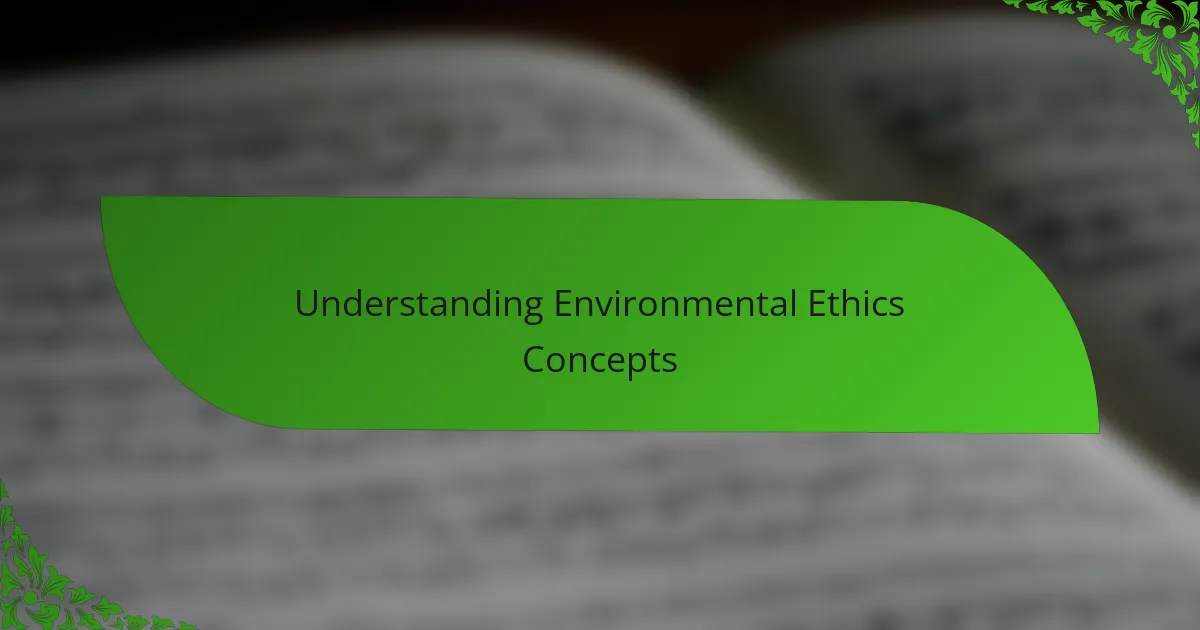
Understanding Environmental Ethics Concepts
When I first encountered the core idea of environmental ethics, I found myself questioning not just how we treat nature, but why it matters beyond human benefit. Concepts like intrinsic value and moral responsibility challenged me to see the environment as more than resources to be used. Have you ever stopped to wonder if a river or a forest has rights in its own right, independent from human needs?
Understanding these concepts isn’t just academic—it’s deeply personal. I remember feeling a mix of awe and guilt realizing how interconnected our lives are with the wellbeing of the planet. It made me ask myself: if we consider nature part of our moral community, how should that change my daily choices?
Environmental ethics asks us to shift perspective from dominance to stewardship. This shift isn’t easy, but embracing it can transform how we relate to food, waste, and even the simple act of walking outside. It’s a radical rethinking that I find both hopeful and necessary in today’s world.
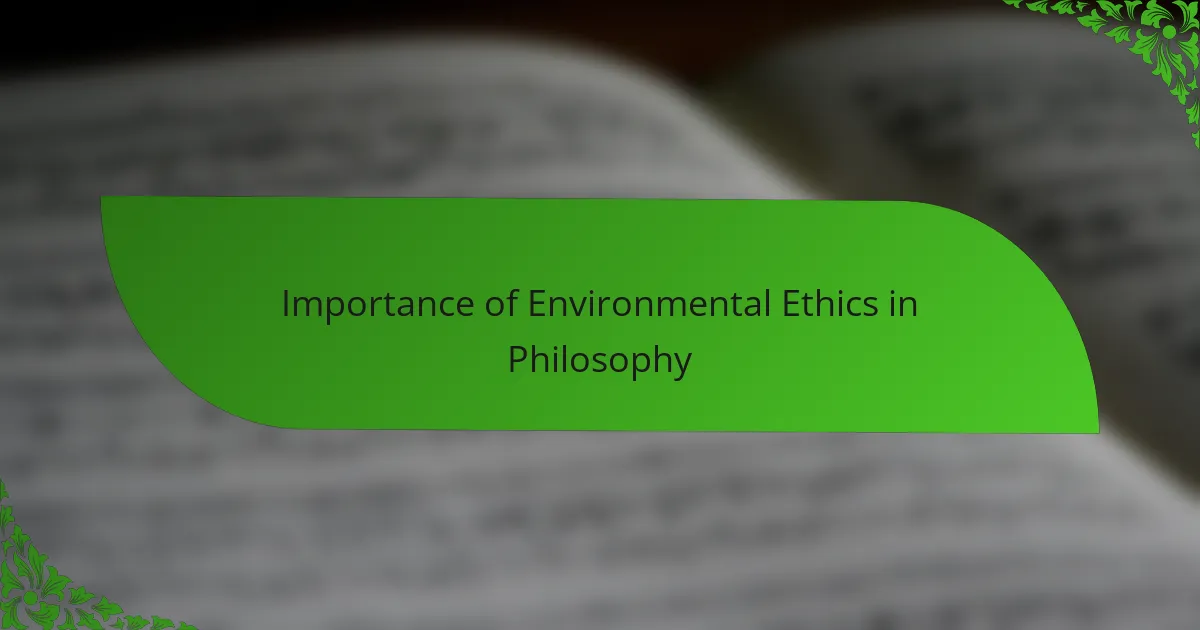
Importance of Environmental Ethics in Philosophy
Philosophy has always been about exploring what we value and why, so it makes perfect sense that environmental ethics carves out such an important space within it. I’ve often thought about how this branch forces us to extend our circle of moral concern beyond just humans. Isn’t it striking to realize that our ethical frameworks, traditionally focused on people, now call on us to include trees, animals, and ecosystems in our moral calculations?
What really hits me about environmental ethics is its power to connect abstract philosophical ideas to tangible actions. When I reflect on the urgency of climate change and biodiversity loss, I see philosophy not just as theory but as a guide to real-world responsibility. It’s one thing to debate values in a classroom, but quite another to feel a personal push to live those values daily.
Sometimes, I wonder if philosophy without environmental ethics risks becoming irrelevant in today’s challenges. This field makes philosophy incredibly practical—encouraging us to rethink consumption, justice, and future generations. When I consider that, the importance of environmental ethics in philosophy feels undeniable, almost urgent.
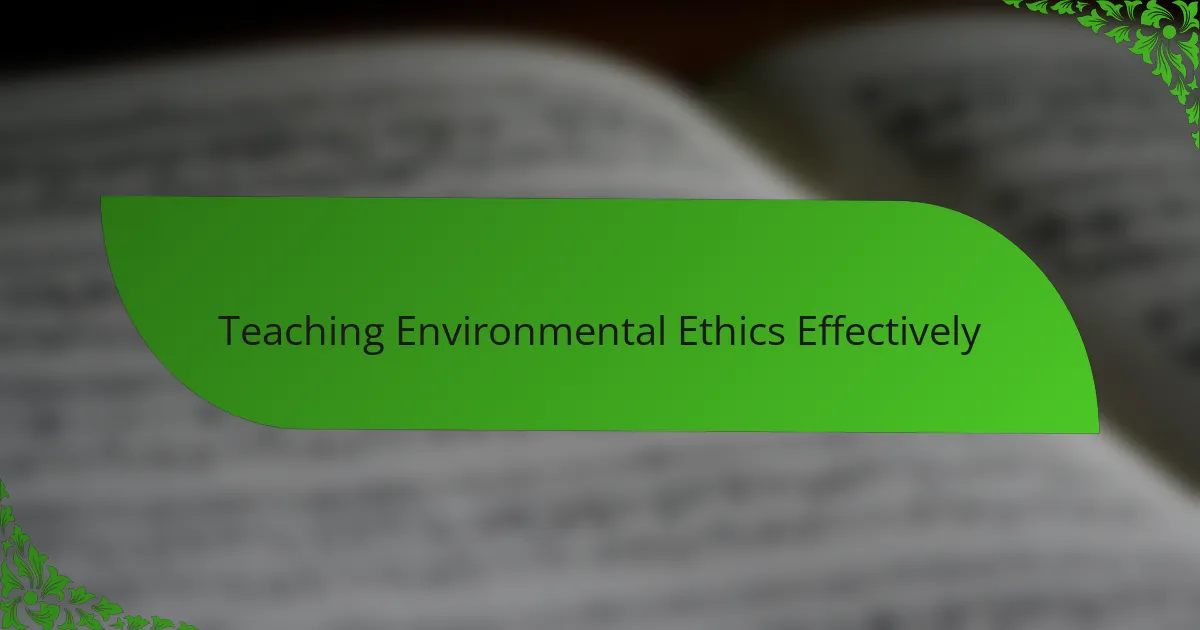
Teaching Environmental Ethics Effectively
Teaching environmental ethics effectively means moving beyond abstract theory to create experiences that resonate personally with students. I’ve found that encouraging learners to reflect on their own relationships with nature sparks a genuine connection, making ethical concepts feel alive rather than distant ideas. How often do we pause to consider how our daily routines impact the living world around us?
In my experience, incorporating case studies and real-world dilemmas bridges the gap between philosophy and practice. When students grapple with concrete examples—like deciding whether to support a local conservation effort or addressing industrial pollution—they start to see the stakes clearly. This practical engagement transforms environmental ethics from a lecture topic into a call to thoughtful action.
Another approach I value is fostering open discussions that invite diverse viewpoints while grounding debates in ethical reasoning. This encourages students to wrestle with complexity and ambiguity, reflecting the real challenges of environmental decision-making. Have you noticed how stepping into another person’s shoes can deepen your own understanding? That empathetic insight is essential when teaching the ethics of our shared planet.
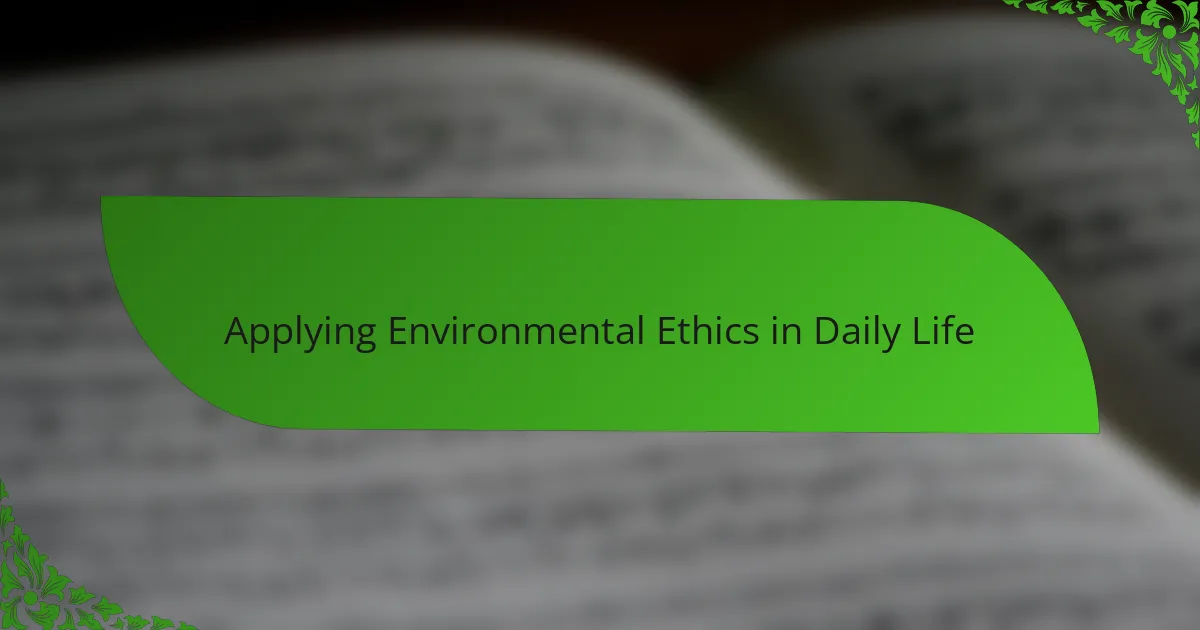
Applying Environmental Ethics in Daily Life
Applying environmental ethics in daily life starts with small, mindful choices—like reconsidering the products we buy or the waste we generate. I remember once pausing before tossing a plastic bottle, thinking about its journey and impact beyond my convenience. Have you ever caught yourself wondering if that single action truly makes a difference?
Sometimes, I find that living out environmental ethics means embracing imperfection and progress rather than perfection. It’s about recognizing when convenience tempts us to sidestep responsibility, but choosing to act with care anyway. How often do we give ourselves credit for the ethical steps we do take, even if they feel minor?
I’ve also noticed that sharing these values with friends and family can ripple into broader change. It’s not about preaching, but inviting others to reflect on how their choices connect to the larger world. In my experience, those conversations make the abstract ideas of environmental ethics come alive—and make daily practice more meaningful.
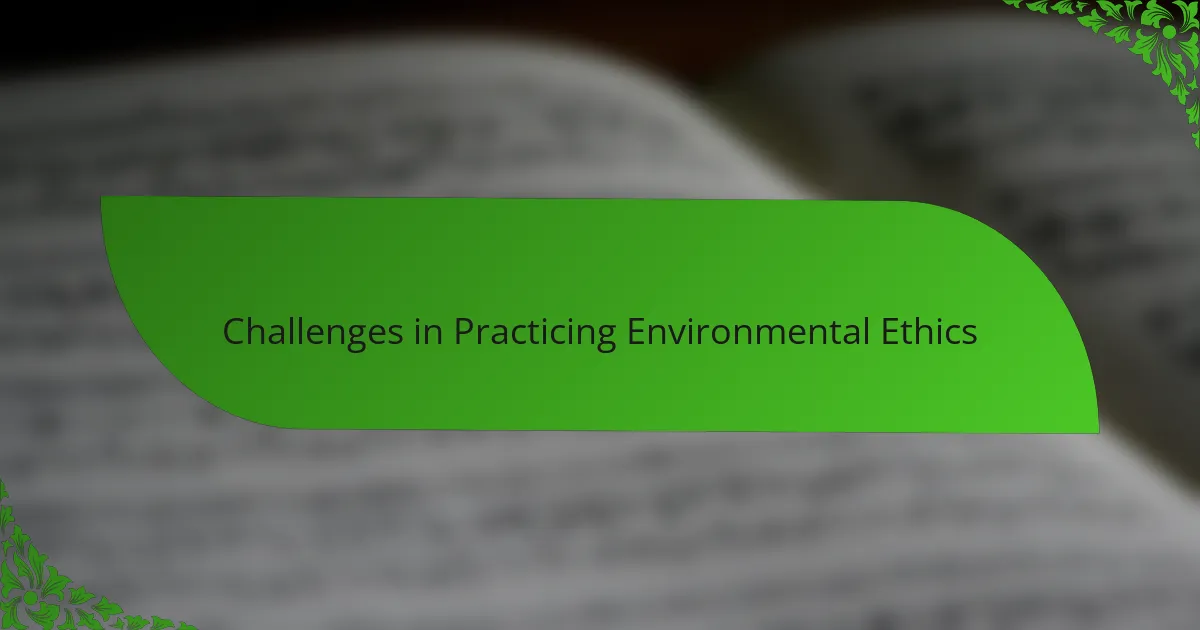
Challenges in Practicing Environmental Ethics
One challenge I’ve wrestled with is the gap between knowing what’s ethical and actually practicing it. It’s easy to feel overwhelmed when faced with conflicting priorities—like convenience, cost, or habits deeply ingrained over years. Have you ever tried choosing sustainably only to realize how limited your options can be in daily life?
Sometimes, I notice how societal norms and economic pressures push against environmental ethics. It’s frustrating when the systems around us don’t reward or even allow ethical choices, making individual efforts feel like drops in an ocean. How do we stay motivated when change feels slow and the obstacles seem so big?
Then there’s the emotional complexity: guilt, helplessness, or even denial can seep in when we face environmental harms linked to our lifestyles. I’ve had moments where I wanted to do more but felt stuck, questioning if my actions really matter. Yet, grappling with these feelings is part of practicing ethics authentically, isn’t it?
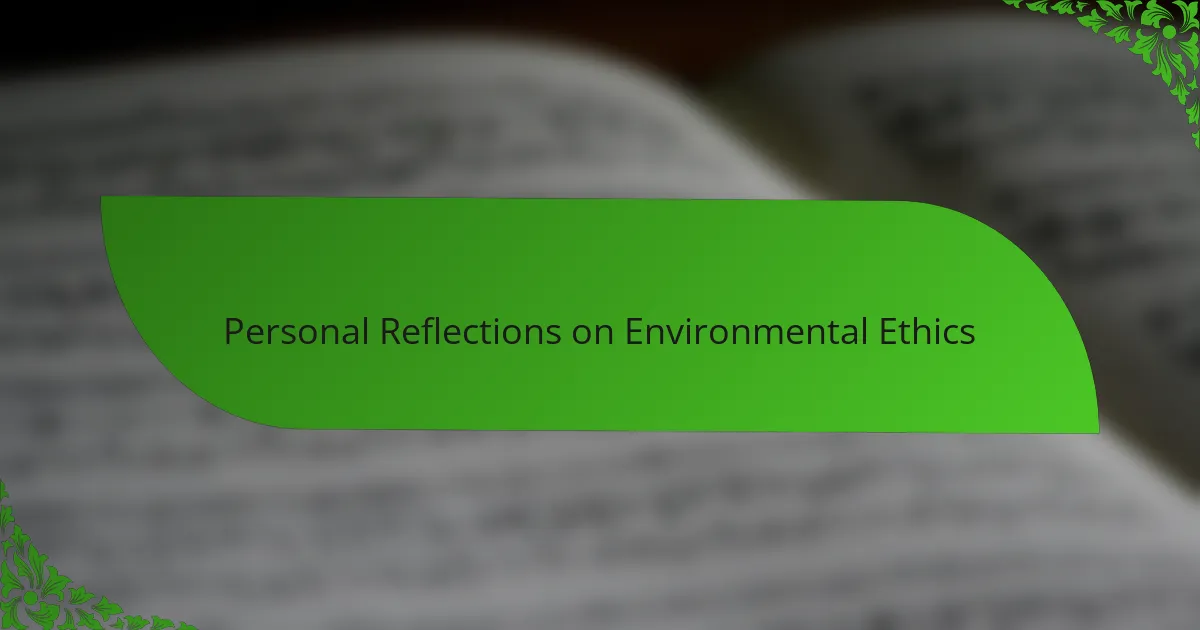
Personal Reflections on Environmental Ethics
Reflecting on environmental ethics often brings me face to face with my own contradictions. I recall a time when I committed to reducing my carbon footprint, yet found myself forgetting reusable bags on a busy day—making me ask, how honest am I with myself about living ethically? This push and pull reveals how deeply personal and ongoing the ethical practice truly is.
Sometimes, I find that environmental ethics challenges not just my actions but my underlying beliefs about nature’s value. What does it mean to truly respect an ecosystem beyond seeing it as a resource? Wrestling with these questions feels like peeling back layers of my own worldview, prompting growth that’s as emotional as it is intellectual.
There are moments when I’m overwhelmed by the scale of environmental issues, but then I remind myself that ethics isn’t about perfection, but persistence. Have you ever noticed how even small, consistent efforts—like choosing local produce or conserving water—can build a quiet confidence in doing what’s right? That steady commitment, however modest, is where real change begins.
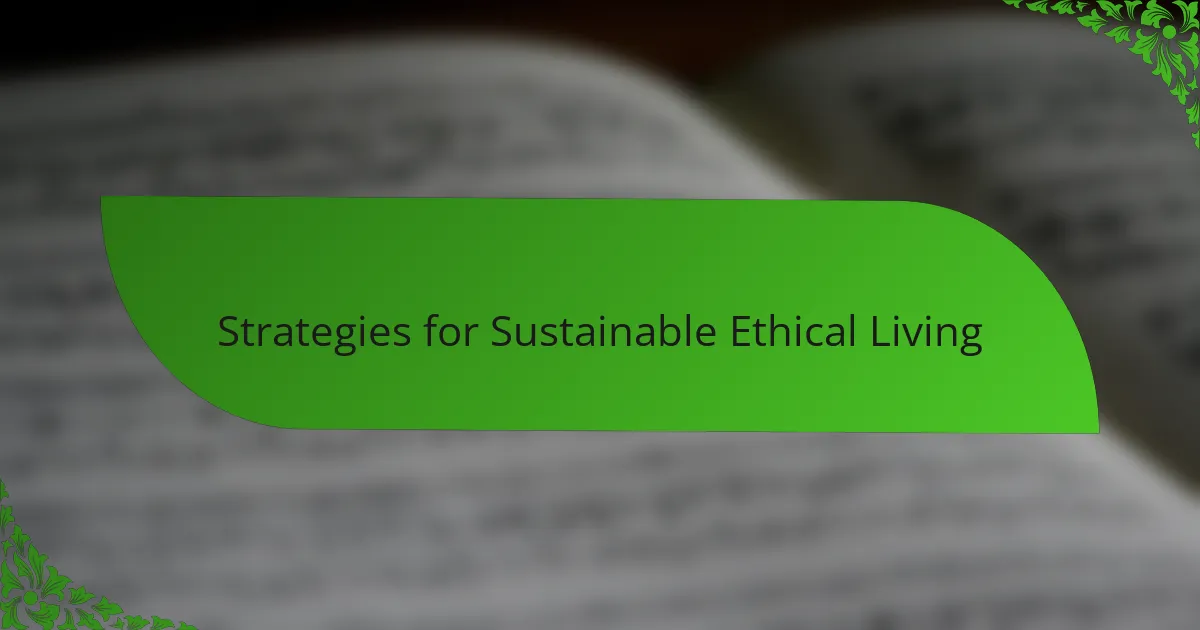
Strategies for Sustainable Ethical Living
Choosing sustainable ethical living often feels like navigating a maze of decisions, doesn’t it? From my experience, one effective strategy is embracing incremental change—starting with manageable habits like reducing single-use plastics or supporting local, ethical brands. Small steps might seem trivial alone, but when I think about their cumulative impact, they fuel my motivation to keep going.
I’ve learned that integrating ethical living into everyday routines requires balancing ideals with practicality. For example, while zero-waste sounds perfect, it’s not always feasible, and that’s okay. What matters to me most is striving for consistency rather than perfection, allowing room for mistakes while recommitting regularly to better choices.
Another strategy I value deeply is community engagement. When I join local conservation groups or share sustainable tips with friends, ethical living becomes a collective journey rather than a solo struggle. Have you noticed how sharing your values can inspire others and create a ripple effect? That shared commitment makes sustainability feel achievable and even hopeful.